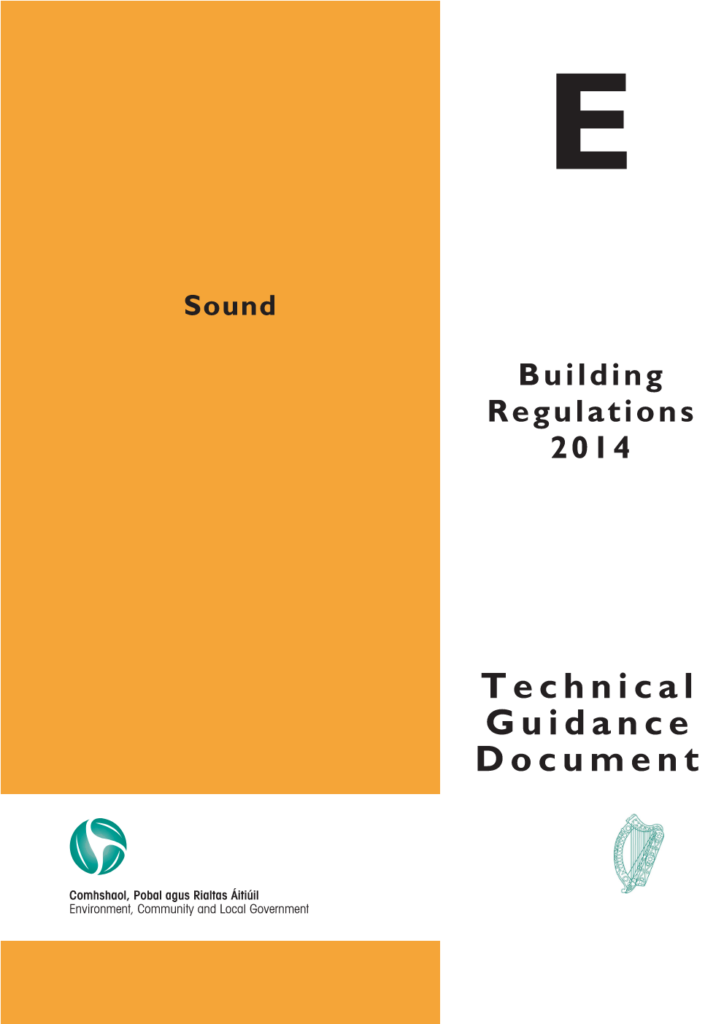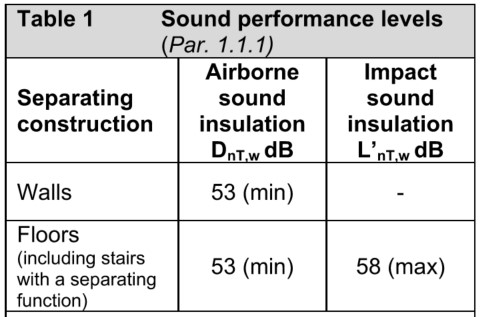Technical Guidance Document E (TGD E) is an essential resource for professionals in the construction and building industry, outlining the requirements and providing detailed guidance on sound insulation standards in residential buildings. Whether you are an architect, engineer, builder, or developer, TGD E offers critical information to ensure your projects meet the required acoustic performance standards.

Technical Guidance Document E (TGD E) is a publication by the Irish Government that sets out the sound insulation requirements for residential buildings. It outlines the minimum standards that must be achieved to comply with Part E of the Building Regulations, ensuring that buildings are constructed to provide ‘reasonable resistance’ sound transmission and provide a comfortable acoustic environment for occupants.
Key Areas Covered in TGD E

Adhering to the standards outlined in TGD E is crucial for several reasons:
You can access the full text of Technical Guidance Document E on the official government website. Click the link below to download the document:

At Amplitude Acoustics, our experienced acoustic consultants have successfully supported Architects and Developers achieved TGD E compliance on 100s of residential developments in Ireland. We provide this support from design, through to construction and commissioning stages of the project providing Ancillary Certification for design, inspection and testing as appropriate. Our experience includes:
Some examples of our project where TGD-E compliance was successfully achieved include:
Contact Us
Should you have any questions or queries regarding achieving TGD-E compliance on your project please feel free to contact us at dublin@amplitudeeacoustics.com.